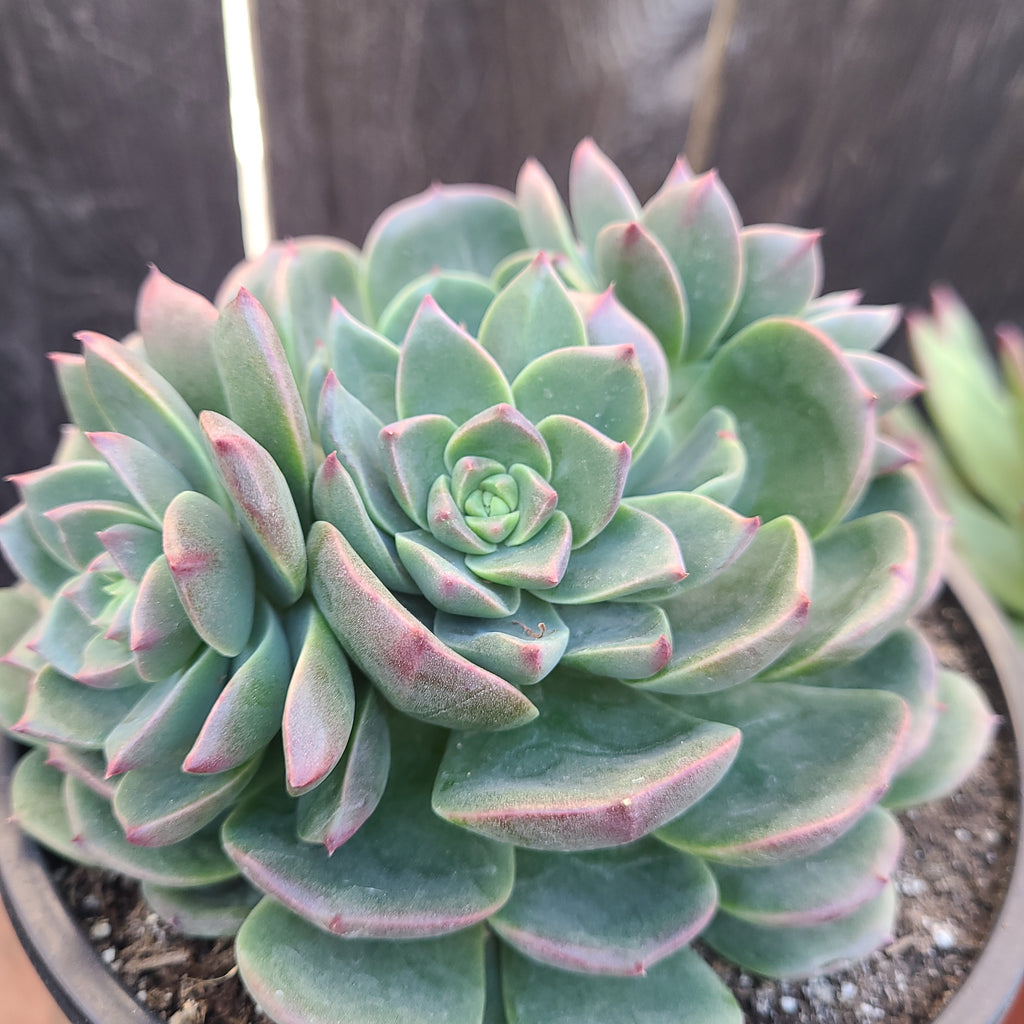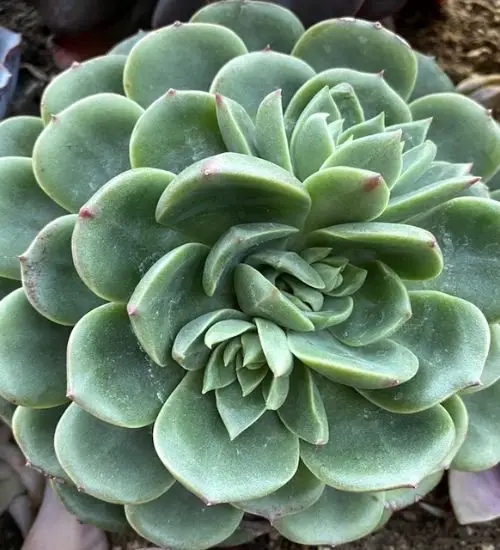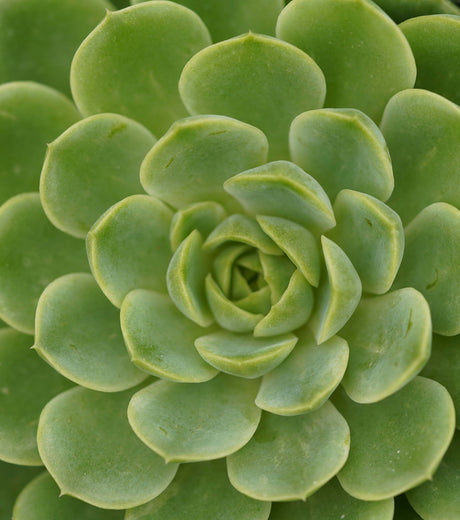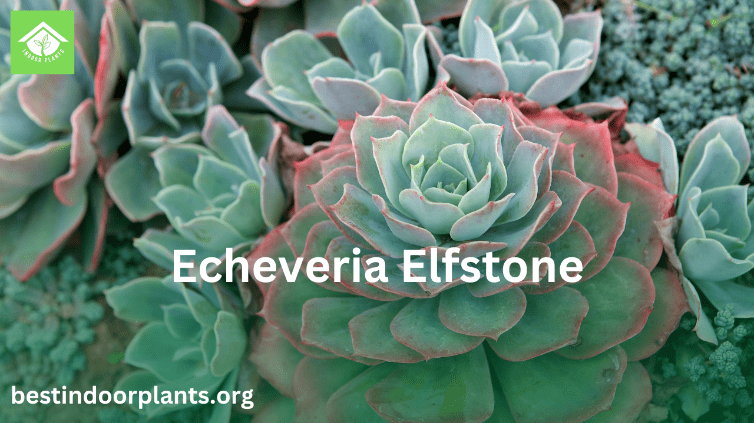Succulent lovers appreciate Echeveria Elfstone, a succulent variety recognized for its diverse colors and rosette shapes. These beautiful plants are also called Echeveria “Elfstone” and can add a touch of class to any indoor garden. To keep them healthy, proper care is important, so that they can thrive well. Our discussion will cover everything you need to know about echeveria elfstone care including their best growing conditions to propagation methods.
Understanding Echeveria Elfstone
What is Echeveria Elfstone?
Echeveria Elfstone is a hybrid succulent with an eye-catching appearance. It usually has compact rosettes with fat pointed leaves that have shades of green, pink, and blue color gradient on it The plant maintains its peculiarity hence it’s the choice of many succulent gardeners whether beginners or experts.

Origin and Characteristics
Echeveria Elfstone is bred from the Mexican origin genus named as ‘Echeveria’. This plant belongs to the family Crassulaceae like all other Echeverias. The plant thrives in dry areas and this coupled with its hardiness plus easy maintenance makes it ideal for such situations.
Ideal Planting Conditions
Light Specifications
Echeveria Elfstone does well in bright indirect sunlight. It tolerates some direct sunlight but can get sunburned, especially when exposed to harsh afternoon rays for long. A south or east-facing window that is screened would be the most appropriate place for your elfstone. In case of insufficient natural light, consider using artificial lighting sources.
Temperature and Humidity
Echeveria Elfstone thrives at temperatures between 60-80°F (15-27°C). It cannot tolerate frost hence consider a place where the temperature does not go below 50°F (10°C). This happens because it has adapted to environments with low humidity levels which are indoor environments. Properly aerate plants to avoid high humidity problems like mold and rotting.
Soil Requirements
In order to have a healthy Echeveria Elfstone, soil must be well-drained. A cactus or succulent mix works best since it allows any excess water to escape and thereby prevent root rot. Alternatively, you can create your own mixture by combining potting soil with perlite or pumice for better drainage. Finally, ensure that the pot you select has holes on its bottom side so as to again minimize water accumulation through the same bottoms.
Watering and Fertilizing
Watering Schedule
Echeveria Elfstone is a plant that can withstand dry conditions and therefore does not need to be watered often. For watering, make sure the soil gets totally dry before you can do it again. Normally, once every fortnight is enough. This will involve a reduction in moisture from the plant as it slows down its growth during the winter months. Prior to adding more water, always confirm if the soil is wet.
Fertilizing Tips
Give your Echeveria Elfstone a succulent fertilizer that has been diluted appropriately all through spring and summer when growing season is experienced. Once per month, if done consistently, will be sufficient for this purpose. In case of any nutrient deficiency in this period such as autumn or winter avoid fertilizing because this time the plants do not require many nutrients inside them at this time of year while they are inactive entering into dormancy stage . Excessive use of fertilizers may result in overgrowth and other problems hence use small quantities sparingly.

Pruning and Maintenance
Techniques used for pruning
Echeveria Elfstone needs to be pruned in order to maintain its health and beautiful look. By gently pinching them off at the base, you can remove dead or damaged leaves from your plant. This prevents diseases from spreading throughout the plant and brings about a tidy appearance. In case your plant becomes leggy or elongated, you might want to trim back its stems so that it grows more compactly.
Pest Control and Diseases
Though Echeveria Elfstone is generally resistant to pest infestation, it can occasionally be invaded by such pests as mealybugs, aphids or spider mites. Inspect your plant regularly for any signs of an infestation. If you find pests on your plant, use insecticidal soap or neem oil as treatment. Furthermore, be on the lookout for possible fungal infections such as mold and rot. Making sure there is proper watering as well as good air circulation would go a long way in minimizing these issues.
Methods of Propagation
Leaf cuttings
One of the most frequently used ways to propagate Echeveria Elfstone is through leaf cuttings. One healthy leaf should be gently twisted from the base of the rosette. The leaf has to dry out for some days until a callus forms over the wound. Place it on top of a soil mix that drains well and lightly mist it. In about two weeks, roots will appear, and new rosettes will begin to appear.
Offsets
“Pups” or offsets grow at the base of Echeveria Elfstone. These can be divided and repotted into fresh plants. Gently detach the offset from its mother plant making sure it still has roots attached to it. Place in a separate pot with fresh soil and water sparingly. This method is often faster and more reliable than propagation by leaves.
Seeds
There are fewer cases when propagation is done using seeds but it is possible to do so. Scatter them on top of well-drained soil mix and press lightly down. Keep the soil moist without making it wet, and put the pot in a warm bright spot. It may take several weeks before germination occurs; thus, patience pays off here. Once seedlings have grown enough they can be potted singly.
Common Problems and Solutions
Etiolation
It is called etiolation when Echeveria Elfstone becomes elongated and leggy, often because of insufficient light. You can fix this by either shifting the plant to a brighter place or adding grow lights to it. To make a more compact growth, trim the stretched out stems.
Root Rot
Improper drainage or over-watering usually causes root rot. In case you notice yellow leaves or mushy base, check the roots and soil. Remove those parts affected and re-pot in clean well-draining soil. Adjust your watering methods to stop this from happening again.
Leaf Drop
Leaf drop could be due to sudden temperature changes, improper watering or pest infestation among others. Make sure there are no fluctuations in the environmental conditions of the plant while adjusting your care regime accordingly. Always observe for signs of pests on regular basis and act promptly when detected any problem with them.

Enhancing Echeveria Elfstone’s Appearance
Achieving Optimal Coloration
One of its most attractive features is Echeveria Elfstone vibrant coloration. The plant’s colors can be enhanced by ensuring it gets enough light. Subdued, indirect sunlight allows the plant to develop a whole range of hues. Further still, in the autumn and winter months, slightly lower temperatures may intensify the colours. Avoid over-fertilization because excessive nutrients will result in luxuriant but less colourful growth.
Grooming for Better Growth
By trimming regularly, we help keep this plant looking good and healthy. Take off any leaves that are not alive or look unhealthy so that they do not harbour pests or diseases. To make everything look clean use gentle brush or dry cloth that may carry away dust and dirt which can lead to increased photosynthesis and general vitality of plants at large scale.Presently these are the methods through which one can make sure his/her pool looks great when viewed from afar!

Unique Ways to Showcase Echeveria Elfstone
Succulent Arrangements
Echeveria Elfstone looks beautiful when placed in a mixed arrangement with other succulents. You can create a succulent garden that has different shapes, sizes and colors. Use decorative containers such as terrariums, hanging baskets or shallow bowls to display your plants. Make sure that all the plants have similar care needs so they can be kept together harmoniously.
Indoor and Outdoor Displays
Echeveria Elfstone works well for both indoor and outdoor displays. For indoors you may want to use decorative pots or plant stands in order to enhance its beauty while outdoors it should be placed where there is plenty of sun but protected from direct sunlight by some kind of cover during winter months when temperatures drop below freezing point this will ensure the survival of the plant.
Themed Planters
If you would like something more personal than just an ordinary pot then consider using themed planters which can also serve artistic purposes thereby making your Echeveria Elfstone more visually appealing. Animal-shaped planters, geometric designs, DIY-painted pots are all examples that will give your succulent collection a unique look though they should have good drainage systems otherwise the plant might not survive due excessive watering.
Echeveria Elfstone’s Contribution to Your Indoor Garden
Benefits of Echeveria Elfstone
Many benefits come with the inclusion of Echeveria Elfstone in your indoor garden. It is low-maintenance and thus very good for busy people or beginners in succulent care. The unique look of this plant adds beauty and can serve as a centerpiece in any room. Also, it helps purify air creating a healthier atmosphere indoors.
Other Plants that Go Well With It
This plant goes well with various houseplants like ferns, cacti, and other succulents too! To make your space more interesting try out different combinations of plants so you have various textures throughout your home. You could also mix up different types of plants which will bring about beautiful colors and shapes to enhance your garden’s attractiveness overall.

Echeveria Elfstone Frequently Asked Questions
How often should Echeveria Elfstone be watered?
Water every 2 to 3 weeks, allowing soil to dry out completely between waterings. This is a drought-tolerant plant so it’s better to under-water than over-water. In winter reduce watering to once a month or even less as the plant stops growing.
Does Echeveria Elfstone do well in low light?
Echeveria Elfstone tolerates some lower light but grows best in bright indirect light. For best results and color, put your plant near a south or east facing window where it will get filtered sun. Use grow lights if natural light is limited.
How do I repot my Echeveria Elfstone?
Repot the Plant when it becomes rootbound or when soil is compacted. Choose pot that is slightly larger with drainage holes. Carefully remove the plant from its old pot, shake off excess dirt and trim any damaged roots. Place in new container with fresh well-draining mix and water lightly.
What kind of soil does an Echeveria Elfstone need?
For this type of succulent you need a fast-draining soil mixture like commercial cactus/succulent mixes or homemade mixtures using potting mix combined with perlite/pumice for better drainage which prevents root rot by allowing excess moisture to escape freely.
How can I stop pests on my Echeveria elfstones?
To prevent infestations check your plants regularly for common pests such as mealybugs, aphids, spider mites etc., then treat them using insecticidal soap/neem oil; ensure good air circulation around plants while avoiding overcrowding as these conditions favor pest problems too!
Final Words
If you want to care for Echeveria Elfstone succulents, it is necessary to know their specific requirements and provide the right environment for them to flourish. A careful watering schedule, knowledge of light conditions needed and how to propagate as well as deal with problems that may arise are some of the factors in maintaining a healthy plant. These tips will enable anyone from expert gardeners downwards enjoy having an Echeveria Elfstone in their homes.
